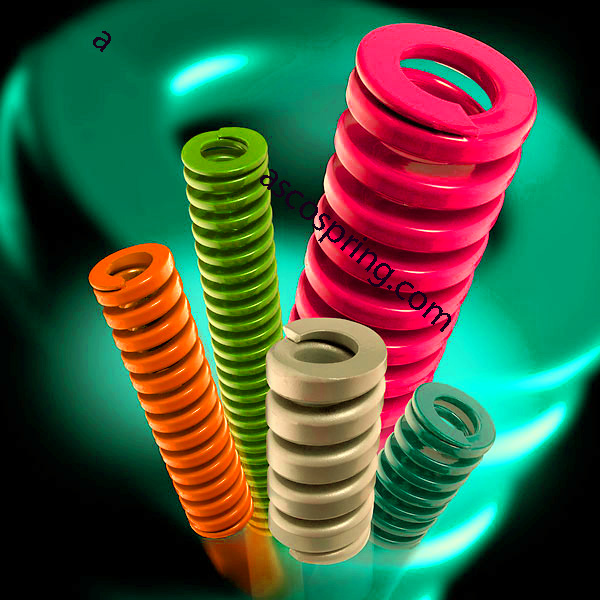
Our Products
-
Coil Springs
-
Compression Springs
-
Helical Coil Springs
-
Industrial Compression Springs
-
Helical Compression Springs
-
Industrial Coil Spring
-
Spiral Springs
-
Railway Equipments
-
Volute Springs
-
Wire Springs
-
Torsion Springs
-
Dice Springs
-
Constant Force Springs
-
Leaf Springs
-
Extension Springs
-
Die Springs
-
Grid Springs
-
Sprocket
-
Industrial Spring
Coil Spring, Compression Spring, Grid Spring Manufacturer & Exporter in India.
We are one of the renowned industrial spring manufacturers in India. We also an ISO 9001:2015 certified Coil Spring, Compression Spring, Grid Spring, Die Spring, Industrial Spring etc. manufacturing as per specification.
CERTIFICATE



LATEST PRODUCTS
![Helical-Coil-Springs_26895[1]](https://ascoengineering.co.in/wp-content/uploads/2020/12/Helical-Coil-Springs_268951-150x150.jpg)
![Compression-Springs[1]](https://ascoengineering.co.in/wp-content/uploads/2020/12/Compression-Springs1-150x150.jpg)
![Industrial-Die-Springs[1]](https://ascoengineering.co.in/wp-content/uploads/2020/12/Industrial-Die-Springs1-150x150.jpg)
![Conical-Helical-Compression-Spring[1]](https://ascoengineering.co.in/wp-content/uploads/2020/12/Conical-Helical-Compression-Spring1-150x150.jpg)
![Constant-Force-Spring[1]](https://ascoengineering.co.in/wp-content/uploads/2020/12/Constant-Force-Spring1-150x150.jpg)
![industrial-grid-spring-250x250[1]](https://ascoengineering.co.in/wp-content/uploads/2020/12/industrial-grid-spring-250x2501-1-150x150.jpg)
![Shaft-Sprocket[1]](https://ascoengineering.co.in/wp-content/uploads/2020/12/Shaft-Sprocket1-150x150.jpg)
![Helical-Coil-Compression-Springs[1]](https://ascoengineering.co.in/wp-content/uploads/2020/12/Helical-Coil-Compression-Springs1-150x150.jpg)
![Industrial-Spiral-Springs[1]](https://ascoengineering.co.in/wp-content/uploads/2020/12/Industrial-Spiral-Springs1-150x150.jpg)
![Coil-Springs_12705[1]](https://ascoengineering.co.in/wp-content/uploads/2020/12/Coil-Springs_127051-150x150.jpg)
![suspension-spring-250x250[1]](https://ascoengineering.co.in/wp-content/uploads/2020/12/suspension-spring-250x2501-1-150x150.jpg)
![Bogie-Suspension-Springs[1]](https://ascoengineering.co.in/wp-content/uploads/2020/12/Bogie-Suspension-Springs1-150x150.jpg)
![Custom-Leaf-Springs[1]](https://ascoengineering.co.in/wp-content/uploads/2020/12/Custom-Leaf-Springs1-150x150.jpg)
![Dice-Springs_66912[1]](https://ascoengineering.co.in/wp-content/uploads/2020/12/Dice-Springs_669121-150x150.jpg)
![Cylindrical-Compression-Springs[1]](https://ascoengineering.co.in/wp-content/uploads/2020/12/Cylindrical-Compression-Springs1-150x150.jpg)
![Extension-Spring_99485[1]](https://ascoengineering.co.in/wp-content/uploads/2020/12/Extension-Spring_994851-150x150.jpg)
![Helical-Coil-Torsion-Springs[1]](https://ascoengineering.co.in/wp-content/uploads/2020/12/Helical-Coil-Torsion-Springs1-150x150.jpg)
![Precision-Volute-Spring[1]](https://ascoengineering.co.in/wp-content/uploads/2020/12/Precision-Volute-Spring1-150x150.jpg)
Spring Design
Materials:-
There are many different materials that can be used to design a spring, including:
Steel: Steel is the most common material used to make springs. It is strong, durable, and has good fatigue resistance.
Stainless steel: Stainless steel is a type of steel that is resistant to corrosion and is often used in applications where the spring will be exposed to harsh environments.
Brass: Brass is a soft, malleable metal that is often used to make springs that will be subjected to high loads or that will be used in corrosive environments.
Copper: Copper is a soft, malleable metal that is often used to make springs for use in electrical applications.
Bronze: Bronze is a strong, corrosion-resistant metal that is often used in springs for marine and other outdoor applications.
Aluminum: Aluminum is a lightweight metal that is often used in springs for applications where weight is a concern.
Carbon: Carbon-based materials, such as carbon steel or carbon composites, can be used to make springs that have increased fatigue resistance and the ability to operate at high temperatures.
Production:-
There are several different methods that can be used to manufacture springs, including:
Coiling: Coiling is a common method of producing springs. It involves using a machine to wind wire into a spiral shape.
Stamping: Stamping is a process in which a spring is cut and shaped from a flat sheet of metal using a die and press.
Wire forming: Wire forming is a process in which a wire is shaped into a spring using a variety of tools and machines.
Extrusion: Extrusion is a process in which a spring is formed by pushing a material through a shaped die.
Forging: Forging is a process in which a spring is shaped by hammering or pressing it into a desired shape.
Springs can be manufactured by spring manufacturers, which are companies that specialize in the production of springs. These companies may use a combination of different methods to produce springs for a wide range of applications.
Considerations & Customization:-
There are several factors that need to be considered when designing a spring for a specific application. Some of these factors include:
Load: The load that the spring will be subjected to is an important consideration. The spring needs to be able to handle the required load without failing or losing its shape.
Deflection: The amount of deflection, or movement, that the spring will experience under load is another important consideration. The spring needs to be able to handle the required deflection without failing or losing its shape.
Frequency: The frequency at which the spring will be subjected to loading is an important factor to consider. The spring needs to be able to handle the required number of cycles without failing or losing its shape.
Environment: The environment in which the spring will be used is also an important consideration. The spring needs to be able to withstand the conditions it will be subjected to, such as temperature, humidity, and exposure to corrosive substances.
Spring manufacturers can customize springs to meet the specific requirements of a given application by using different materials, wire diameters, and number of coils. They can also use a variety of manufacturing methods to produce the desired shape and size of the spring.




